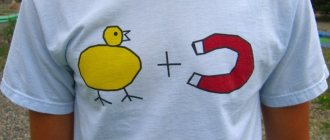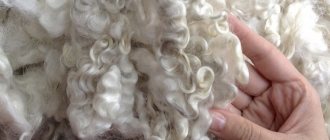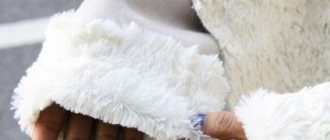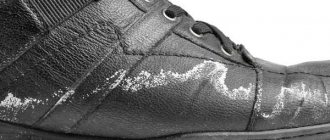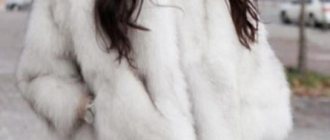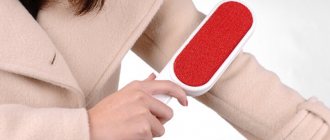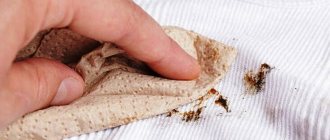Nowadays, fur products are made from various materials, from expensive natural rare animal skins to artificial ones that every woman can afford. But no matter how expensive the material is, no one is immune from the fact that it will turn yellow and lose its presentable appearance. Then the question arises: how to remove yellowness from fur?
To clean your fur, you can go to a dry cleaner or do it at home using effective, proven cleaning methods.
Why does fur turn yellow?
Firstly, it comes from old age. Without nourishment, fur hairs lose their pigment, and precipitation and bright daylight accelerate this process.
- The yellowness is distributed unevenly: first the guard hairs lose color, and a little later the undercoat.
- Not only white furs are susceptible to yellowing, but also arctic fox, silver fox and sable.
Dust, sweat, dirty sediments and cosmetics are gradually absorbed into the structure of the hairs and spoil the appearance of the fur. Therefore, it is important to regularly pay attention to a fur coat, hat and fur collar in order to remove dirt in a timely manner.
Look at the photo of the yellowish fur, how unattractive it looks.
Cleaning options
Any fur product is a delicate item. Incorrect actions can permanently ruin a rabbit fur coat, hat or collar. Therefore, the applicable product must be tested.
The test is carried out on an inconspicuous small area of the product. After applying the substance, you should wait at least fifteen minutes, then remove it and analyze the result.
To clean fur, they will help you cope with the task:
- Hydrogen peroxide.
- Talc.
- Bran.
- Vinegar.
- Semolina.
- Petrol.
- Starch.
- Ammonia.
- Soft brush.
The available tools used to carry out this procedure are accessible and low in price. But their effectiveness allows you to avoid the cost of purchasing expensive cleaning solutions. Cleaning fur does not take much time and does not require complex actions.
Any fur product is a delicate item. Incorrect actions can permanently ruin a rabbit fur coat, hat or collar. You can avoid such situations if you adhere to several important recommendations:
Semolina and flour
This product is widely used for cleaning fur and down scarves. The method is simple, cheap and effective. Cereals remove dust, dirt and grease.
- The fur coat or collar should be laid out on a horizontal surface and semolina should be sprinkled in an even layer.
- To clean the hat, you will need to put it on a three-liter jar wrapped in a towel.
- After this, you need to carefully comb the fur with a soft brush until the rump turns gray.
- If the color is not restored, you need to repeat the procedure with a new portion of semolina.
- Shake the product to remove grains. You can also use a vacuum cleaner at low power.
Instead of semolina, you can use flour, but first heat it in a dry frying pan. Work with flour until it darkens. Then use a new portion.
How to get rid of yellowish fur from arctic fox fur?
Arctic fox fur has a very attractive appearance and is pleasant to the touch, but at the same time it turns yellow faster than others. If this problem affects your favorite item, then you can eliminate yellow spots from an arctic fox fur coat using the following methods.
Method 1
- Heat the flour in a frying pan.
- Distribute it evenly over the pile.
- Clean the fur item with a brush, removing any flour.
Important! For flour to have the desired effect, it must be applied hot.
Method 2
Cleaning an arctic fox fur coat using starch and gasoline:
- Soak a sponge in gasoline.
- Process the fur pile.
- Wait until the gasoline evaporates.
- Spread potato starch evenly over the surface of the fur coat.
- Wait 20 minutes.
- Shake or vacuum.
Method 3
- Mix talc and hydrogen peroxide.
- Apply the mixture to the fur item.
- Wait until it dries.
- Shake to remove any remaining mixture.
- Treat the fur coat with a dry brush.
Method 4
- Place the fur coat on a horizontal surface.
- Prepare a mixture using potato starch, finely ground chalk and semolina.
- Heat in a frying pan.
- Apply to problem areas and rub.
- Shake to rid the fur coat of the mixture.
- Clean the fur with a clothes brush.
Method 5
If you don’t have time for home experiments, then the simplest and most effective solution will be the support of specialists working in dry cleaning. Here, professionals will choose the best option for a fur product, restoring its attractive appearance.
Important! When choosing a dry cleaner, it is better to give preference to a special organization that cleans fur products. Saving money in this case can have a detrimental effect, so it is easier to pay for high quality work than to try to save money.
Starch
How else can you clean white fur from yellowness? Starchy substances perfectly clean and refresh the color of fur. The product is laid out on a horizontal surface, starch is poured on top in an even layer (through a strainer).
A solution of water and detergent is poured into a spray bottle and the fur is sprayed. When the hairs are dry, carefully comb the hairs with a clothes brush.
Another effective remedy is to clean furs with a mixture of starch and refined gasoline. The ingredients are combined to form a paste, applied to the yellowed areas and left to dry. Then simply remove the starch with a clothes brush.
Chemicals
You can clean rabbit fur using special products that contain chemical compounds:
- Insaf. Gently cleans the pile and prevents the appearance of new stains on its surface by creating a protective layer. Contains antistatic agent. Insaf is produced in the form of a spray;
- TERRE DE SOMMIERES POWDER. The price of powder with a stain remover effect is high, but it effectively removes greasy stains from the surface of the pile;
- ULTRA FTNISH MILK. The product is produced by an Italian company. It perfectly cleans fur of any type, gives it shine and silkiness. When applied, the villi do not stick together;
- LIVAL LICKER KONZ – removes dirt from fur, returning it to its original color.
After treating fur with chemicals, be sure to ventilate the clothing for 30 minutes.
Biofur, made without the addition of aggressive chemical components, is very popular. Using this aerosol you can clean the pile from dust, food residues, dirt, grease and stains caused by the use of decorative cosmetics.
The Russian company that produces the product claims that its use extends the durability of fur. You can purchase the product in the form of a set or in a separate can.
Salt and ammonia
For cleaning, prepare a mixture:
- Alcohol - 1 tsp;
- Salt - 3 tsp;
- Water - 500 g.
The finished mixture is applied with a spray bottle, distributed over the hairs using a clothes brush and left to dry.
Removing greasy stains: 3 ways
Solutions of active substances are used to clean the product from grease on collars, elbows, and cuffs. If splashes of grease accidentally get on your fur coat, it is not necessary to use strong stain removers.
To remove all greasy stains you need to use:
- purified gasoline or technical alcohol;
- water;
- with a cotton swab.
Ammonia. Mix 1 tablespoon of ammonia with 3 tablespoons of salt and add 400 ml of water. Or mix ammonia and white spirit in equal proportions. Apply the solution to the contaminated area and leave for half an hour. Wipe with a clean damp cloth to remove any residue, then blot with a clean cloth.
Gasoline is mixed with water in a 1:1 ratio , a cotton pad is moistened in the resulting solution and the pile of the product is wiped with it. After treatment, the fur coat must be well ventilated to rid it of the chemical smell. The procedure is best carried out outdoors. It is important to remember: gasoline can only be used diluted in water.
White spirit, which is mixed in equal proportions with ammonia will help remove greasy stains from fur clothing After applying the cleaning composition, you need to wait a few minutes, then remove it with a clean, damp cloth.
Hydrogen peroxide. The substance is used to combat yellow stains left after improper drying or contact with water. Mix 30 ml of 6% peroxide in 300 ml of clean water, add 20 ml of ammonia. After mixing the components, apply the solution using a spray bottle. The distance from the spray bottle to the product is 30-40 cm. Remove the solution with a brush, carefully combing the pile.
Wet cleaning with home remedies
Washing solution:
- To treat the product, use detergent for cats/dogs, since it contains substances against the appearance of yellowness.
- Dilute a little shampoo in warm water, then use a soft sponge to apply the solution to problem areas along the hair growth path.
- Instead of pet shampoo, you can use white liquid soap.
And to enhance the whiteness effect, add a couple of tablespoons of hydrogen peroxide to the water.
Blue
The effect of whiteness is obtained by displacing a yellow tint with blue pigment. To make a working solution for processing furs, just a couple of drops of blue in a bowl of water is enough. Make sure that the solution turns out to be a soft blue shade.
On a note! Fur should not be soaked in excess with the solution, as it may become damaged.
You need to lay the product on a horizontal surface and treat the fur with a spray bottle. Then the fur coat is allowed to dry. The final stage is combing with a brush.
Vinegar
How to remove yellowness from fur using vinegar?
- The vinegar solution returns the fur to its original color and shine.
- Take 9% or 6% vinegar, soak a cloth or cotton swab in it, and wipe the yellowed areas.
- To remove the smell of vinegar, the fur coat is hung on the balcony.
What to do when white fur turns yellow?
Products made from natural fur are bread and a headache for dry cleaners. Some dry cleaners are just thinking about accepting fur for cleaning, some have already given up cleaning fur, having encountered the specifics of cleaning fur products. A series of publications on dry cleaning of fur products begins with the most difficult question for many - what to do when white fur turns yellow?
The fur has turned yellow
Over time, white fur acquires a characteristic yellowish tint. Some call this phenomenon the term burnout, referring to the fact that the fur could be bleached by the sun and change color for this reason.
In the professional terminology of dry cleaners, this term is not used and is rather jargon that describes different situations and problems with fur. For a general understanding of the problem, let's take it as a basis.
Where does yellow fur come from?
There are several reasons for the appearance of yellow fur.
Fatliquoring of the flesh as a cause of yellowing of fur
In the process of preparing raw materials for a future fur coat, the skins undergo several stages of processing in various chemical compounds - the skins must be cleaned of fat, epithelium, and pigments. The products used must ensure long-term storage of the skins. One of the last stages is fattening the flesh. Fatliquoring is carried out with organic and synthetic fats, as well as mixtures of these fats.
Fatliquoring of the flesh is carried out in order to give the raw material softness and elasticity. At the same time, raw material suppliers prioritize softness over the strength and durability of the dye. It is unlikely that anyone will want to buy a rough, non-elastic fur coat.
Over time, during the use of the finished product, the fat from the skin penetrates the hair and oxidizes under the influence of the environment, giving the fur that same yellowish tint. Brown and gray shades are rarely found on the surface of a fur product.
Reducing costs in the production of skins as a reason for yellowness of fur
Raw materials for fur coats and fur products are tinted before furriers begin working with them. This is normal practice in the production of fur products. Painting removes different shades and gives the product a finished look. The dye is fixed on the fur at a temperature of 60-80 degrees, the welding temperature of the fur is on average 55 degrees.
In order for the dye to be applied, the semi-finished product must be retanned. And this leads to an increase in the cost of the process and the semi-finished product. It turns out that dyed and natural mink will cost the same. And this is not beneficial for the manufacturer.
Therefore, the dye is applied at a temperature of 28-35 degrees and is not painted, but tinted.
During operation, the toner crumbles and a yellow tint comes out.
Will dry cleaning help if the fur has turned yellow?
Many dry cleaners either refuse to clean fur items with yellowed fur, or warn the client that the yellowish tint of the fur may intensify until it turns lemon yellow. This is due to the drugs used when processing products in dry cleaning. It is almost impossible to learn anything from the actual technology of sewing a product - one raised the animal, another processed the skins, a third dyed it, a fourth fattened it, a fifth sewed it. Therefore, the products used in dry cleaning - the solvent perchlorethylene, alternative solvents (Silicone, hydrocarbon, K4, and others) can aggravate the situation with the yellowness of the fur.
How to remove yellowness from fur?
The NAUM technology is designed to help remove yellowness from fur - removing yellowness from fur. This is a professional technology that includes equipment, techniques and methods of working with fur products using specially developed tools.
Removing yellowness from fur using NAUM technology
NAUM technology for removing yellowness from fur is designed to remove manifestations of the natural yellowness of the hair and increase its whiteness and brightness. Yellowness appears due to the oxidation of natural fat on the hair during storage, as well as due to the biological secretions of the animal during life.
Removal of such defects is carried out using optical brighteners, which are a class of so-called white dyes. They absorb rays in the ultraviolet region of the spectrum and emit them in the visible region, filling that region of the reflected light spectrum that is responsible for the yellow color on the hair.
Peroxide
This is a safe bleaching agent if the proportions are followed. There is no need to increase the amount of peroxide for a better effect; large yellowness should be treated in several approaches.
- To prepare the solution, you need to stir a teaspoon of peroxide and a few drops of ammonia in a tea cup.
- Moisten a cloth with this mixture and treat problem areas.
- Try not to saturate the leather of the fur item with the solution, so as not to spoil it.
- Treat only the surface of the hairs.
Peroxide and starch
Using this product you can clean mink fur from yellowness. Starch is mixed with peroxide to form a liquid slurry and evenly distributed over the white fur.
After drying, the starch should be shaken off and the coat should be combed with a soft brush. If you periodically update the color of white mink in this way, it will always look beautiful.
Precautionary measures
Any fur, and especially rabbit fur, is a delicate material. Careless actions can ruin it forever.
To clean a fur coat or cape and not aggravate its condition, you need to remember a few “taboos”:
- Under no circumstances should fur items be washed;
- It is not recommended to use strong chemicals to remove stains;
- no need to comb the fur with a fine-toothed comb;
- Do not dry fur clothes on a radiator or with a hot hair dryer.
- Washing rabbit fur in a machine is strictly prohibited. To prevent yellowing of a white rabbit fur coat, it should be wrapped in a thick cover of a dark, cool color. It is better to store such a fur coat in a cool place.
To clean rabbit collars and hats, it is better to use cleaning products with a gel consistency. Remembering these simple rules, you can cope with dirt on your own and wear your favorite fur coat for many years.
Sprays
The industry produces special aerosols and sprays to restore fur color:
- Fresh-Fur is used to restore the color of light-colored furs;
- Magic Snow is used to eliminate yellow plaque on wool;
- Furasol is a dye for fur; you can paint the product in different shades.
Aerosols are easy to work with. The substance is sprayed evenly over the fur and left to dry. Then the product is carefully combed. If you are going to dye the product a different color, the fur must first be cleaned of contaminants by any available means.
Before working with aerosols, carefully read the instructions so as not to damage the fur product. If you are afraid to dye your fur yourself, it is better to take it to the dry cleaner.

